
Example 3.16 (Analyzing the Quick-Sort Algorithm)
Suppose we are given a set of n distinct values \(x_{1}, ..., x_{n}\) and we desire to put these values in increasing order or, as it is commonly called, to sort them. Read More

Example 3.17
In the match problem of Example 2.31 involving \(n\), \(n > 1\), individuals, find the conditional expected number of matches given that the first person did not have a match.Read More
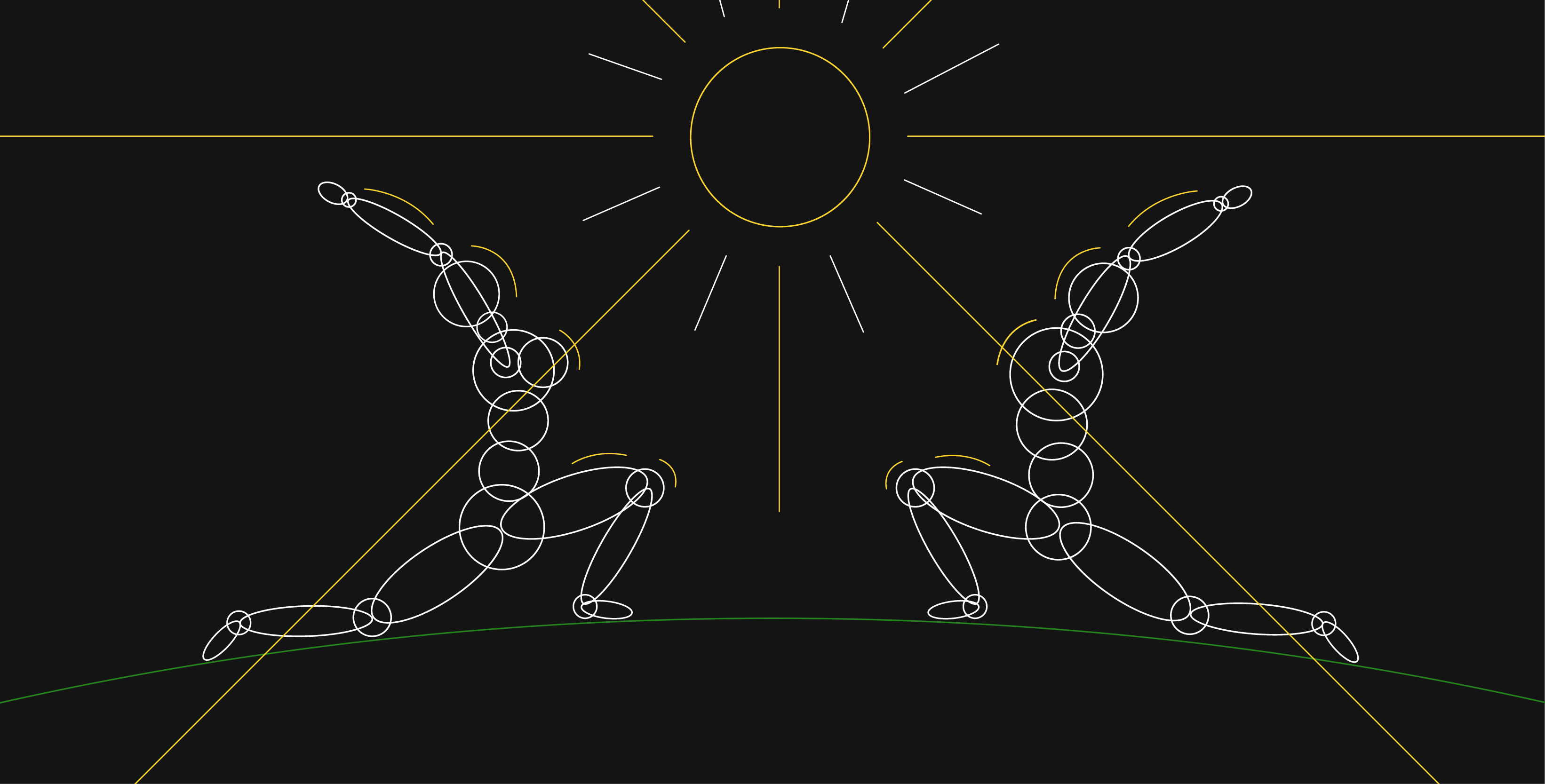
Example 3.23
Suppose that the number of people who visit a yoga studio each day is a Poisson random variable with mean \(\lambda\). Suppose further that each person who visits is, independently, female with probability \(p\) or male with probability \(1−p\). Find the joint probability that exactly \(n\) women and m men visit the academy today. Read More

Example 3.25 (The best prize problem)
Suppose that we are to be presented with \(n\) distinct prizes in sequence. After being presented with a prize we must immediately decide whether to accept it or reject it and consider the next prize. The only information we are given when deciding whether to accept a prize is the relative rank of that prize compared to ones already seen. That is, for instance, when the fifth prize is presented we learn how it compares with the first four prizes already seen. Suppose that once a prize is rejected it is lost, and that our objective is to maximize the probability of obtaining the best prize. Assuming that all \(n!\) orderings of the prizes are equally likely, how well can we do? Read More
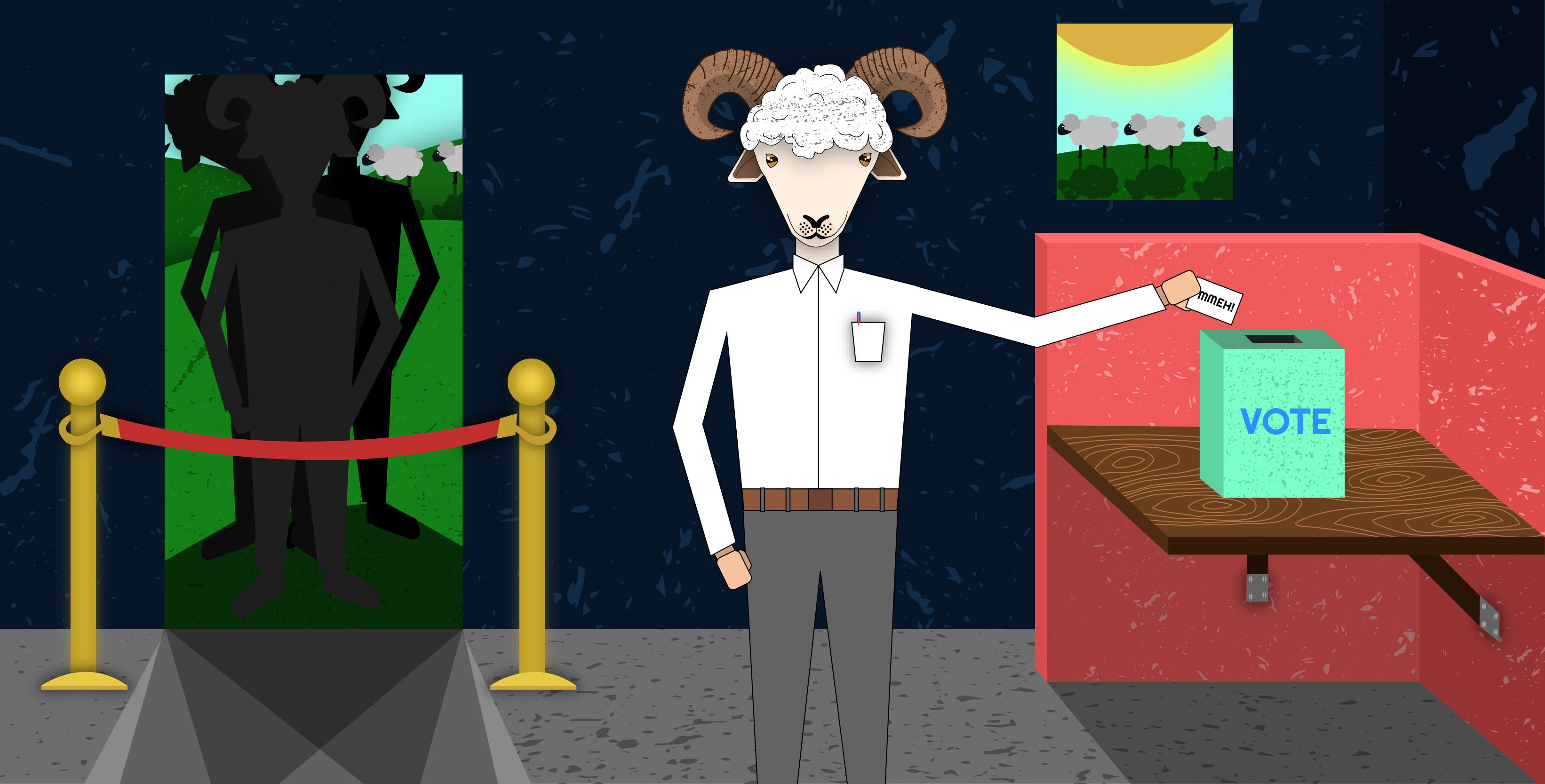
Example 3.27 (The Ballot Problem)
In an election, candidate \(A\) receives \(n\) votes, and candidate \(B\) receives \(m\) votes where \(n > m\). Assuming that all orderings are equally likely, show that the probability that \(A\) is always ahead in the count of votes is \(\frac{n−m}{n+m}\) Read More
Example 3.28
Let \(U_{1},U_{2}, ...\) be a sequence of independent uniform \((0, 1)\) random variables, and let \(N = min(n ≥ 2: U_{n} > U_{n−1})\) & \(M = min(n \ge 1: U_{1} + · · · + U_{n} > 1)\). That is, \(N\) is the index of the first uniform random variable that is larger than its immediate predecessor, and \(M\) is the number of uniform random variables we need sum to exceed 1. Surprisingly, \(N\) and \(M\) have the same probability distribution, and their common mean is \(e!\)Read More

Example 3.30
A population consists of m families. Let \(X_{j}\) denote the size of
family \(j\) and suppose that \(X_{1}, ... , X_{m}\) are independent random variables having the
common probability mass function \(p(k) = P(X_{j} = k)\) such that \(\underset{k}{\Sigma}p_{k} =
1\) with mean \(\mu = \underset{k}{\Sigma}kp_{k}\)
Suppose a member of the population is
randomly chosen, in that the selection is equally likely to be any of the members of the
population, and let \(S_{i}\) be the event that the selected individual is from a family of size
\(i\). Argue that \(P(S_{i}) \rightarrow \frac{ip_{i}}{\mu}\) as \(m \rightarrow \infty\)
Read More
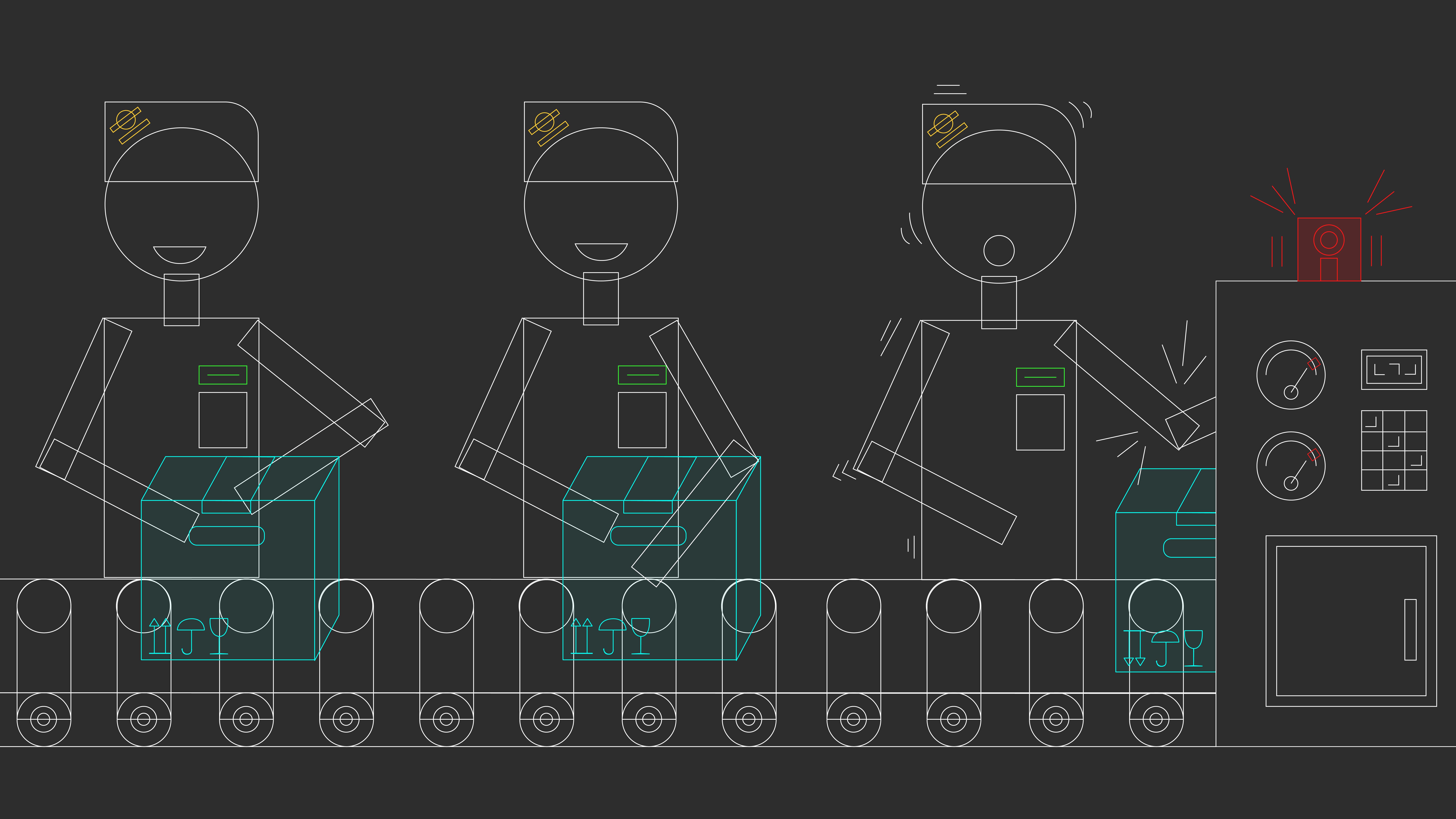
Example 3.11 (The Expectation of the Sum of a Random Number of Random Variables)
Suppose that the expected number of accidents per week at an industrial plant is four. Suppose also that the numbers of workers injured in each accident are independent random variables with a common mean of 2. Assume also that the number of workers injured in each accident is independent of the number of accidents that occur. What is the expected number of injuries during a week? Read More

Example 3.32 (Automobile Insurance)
An automobile insurance company classifies each of its policyholders as being of one of the types \(i = 1, ..., k\). It supposes that the numbers of accidents that a type i policyholder has in successive years are independent Poisson random variables with mean \(λ_{i}: i = 1, ..., k\). The probability that a newly insured policyholder is type \(i\) is \(p_{i}\) such that \(\underset{i}{\Sigma} p_{i} = 1\).
- Given that a policyholder had n accidents in her first year, what is the expected number that she has in her second year?
- What is the conditional probability that she has m accidents in her second year?
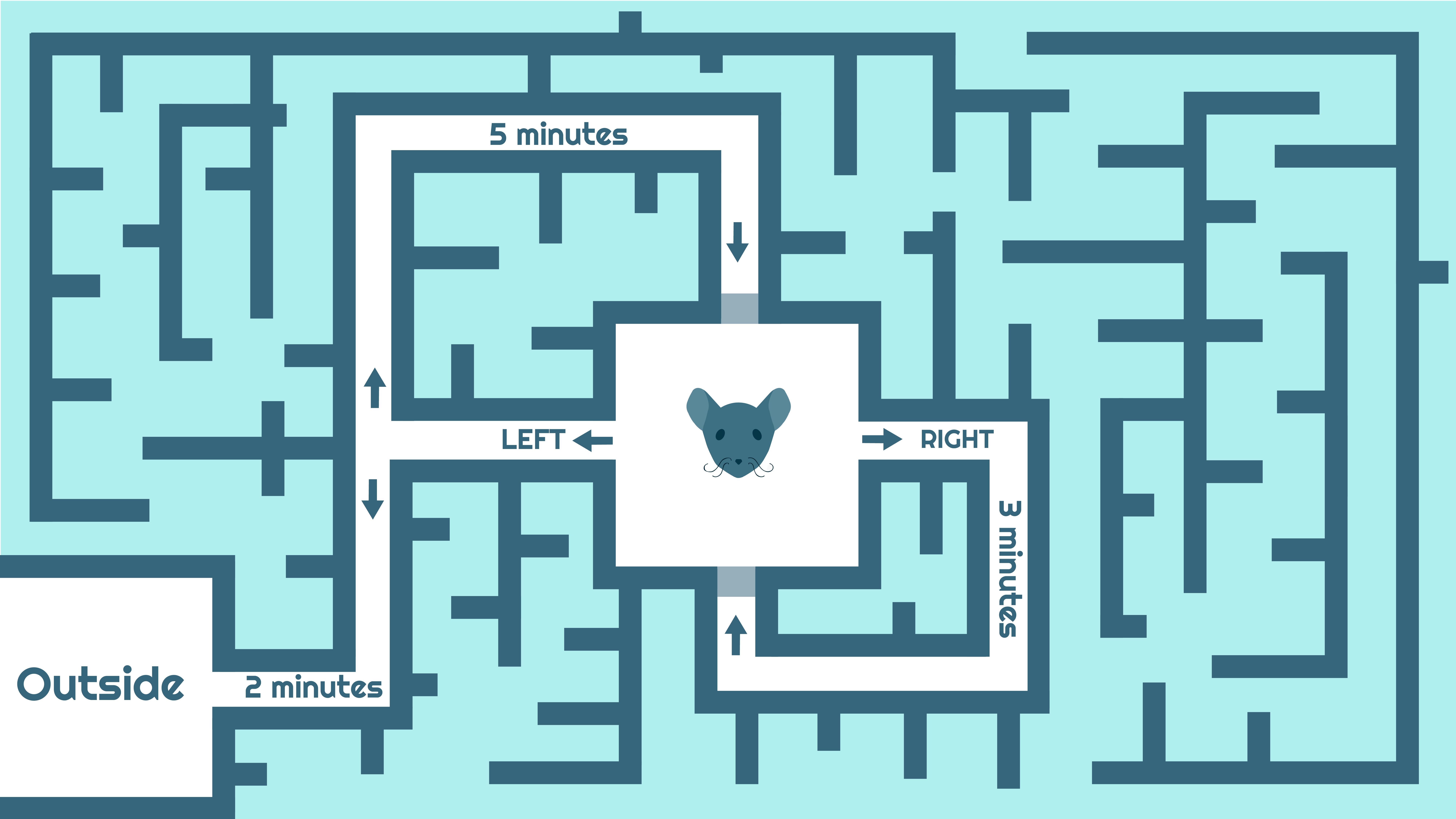
Example 3.13 (Mouse trapped in a maze)
A mouse is trapped in a maze. Initially it has to choose one of two directions. If it goes to the right, then it will wander around in the maze for 3 minutes and will then return to its initial position. If it goes to the left, then with probability \(\frac{1}{3}\) , it will depart the maze after 2 minutes of traveling, and with probability \(\frac{2}{3}\) it will return to its initial position after 5 minutes of traveling. Assume that the mouse is at all times equally likely to go to the left or the right. Let \(T\) denote the number of minutes that it will be trapped in the maze.What is \(E[T]^{*}\)? Read More

Section 3.6.1 (A List Model)
Consider \(n\) elements \(\rightarrow e_{1}, e_{2}, ..., e_{n}\) that are initially arranged in some ordered list. At each unit of time a request is made for one of these elements—ej being requested, independently of the past, with probability \(P_{j}\). After being requested the element is then moved to the front of the list. That is, for instance, if the present ordering is \(e_{1}, e_{2}, e_{3}, e_{4}\) and \(e_{3}\) is requested, then the next ordering is \(e_{3}, e_{1}, e_{2}, e_{4}\). We are interested in determining the expected position of the element requested after this process has been in operation for a long time.Read More

Section 3.6.3
Uniform Priors For many applications, we assume \(p\) to be constant and calculate the probabilities of \(k\) occurrences out of \(n\) trials. It would be straightforward to calculate and anticipate how the probabilities might look like. How about the case when the probability creating the binomial is itself a distribution? Interesting isn’t it? Read More
Exercise 3.02
Let \(X_{1}\) and \(X_{2}\) be independent geometric random variables having the same parameter \(p\). Guess the value of \(P\{X_{1}=i | X_{1}+X_{2}=n\}\) Read More
Exercise 3.08
An unbiased die is successively rolled. Let X and Y denote, respectively, the number of rolls necessary to obtain a six and a five. Find
- \(E[X]\)
- \(E[X|Y = 1]\)
- \(E[X|Y = 5]\)
Exercise 3.13
Let \(X\) be exponential with mean \(\frac{1}{\lambda}\) that is, \(f_{X}(x) = \lambda e^{−\lambda x} : 0 < x < \infty\). Find \(E[X|X > 1]\) Read More

Exercise 3.20
Consider Example 3.13, which refers to a miner trapped in a mine. Let \(N\) denote the total number of doors selected before the miner reaches safety. Also, let \(T_{i}\) denote the travel time corresponding to the ith choice, i ≥ 1. Again let X denote the time when the miner reaches safety. Give an identity that relates \(X\) to \(N\) and the \(T_{i}\)
- What is \(E[N]\)?
- What is \(E[T_{N}]\)?
- What is \(E[\underset{i}{\Sigma}T_{i}|N = n]\)?
- Using the preceding, what is \(E[X]\)?
Exercise 3.22
Suppose that independent trials, each of which is equally likely to have any of m outcomes, are performed until the same outcome occurs \(k\) consecutive times. If \(N\) denotes the number of trials, show that \(E[N] = \frac{mk-1}{m-1}\) Read More

Exercise 3.23
A coin having probability p of coming up heads is successively flipped until two of most recent three flips are heads. Let N denote the number of flips. (Note that the first two flips are heads, then \(N = 2\).) Find \(E[N]\). Read More

Exercise 3.26
You have two opponents with whom you alternate play. Whenever you play \(A\), win with probability \(p_{A}\); whenever you play \(B\), you win with probability \(p_{B}\), where \(p_{B}\) > \(p_{A}\). If your objective is to minimize the expected number of games you need to play to win two in a row, should you start with \(A\) or with \(B\)Read More
__CARD__TITLE__
Exercise 3.27 A coin that comes up heads with probability \(p\) is continually flipped until the pattern \(TH\) appears. (That is, you stop flipping when the most recent flip lands heads, the two immediately preceding it lands tails.) Let \(X\) denote the number of flips , and find \(E[X]\). Read More
Exercise 3.29
Two players take turns shooting at a target, with each shot by player \(i\) hitting the with probability \(p_{i}: i = 1, 2\). Shooting ends when two consecutive shots hit target. Let \(\mu_{i}\) denote the mean number of shots taken when player \(i\) shoots first, = 1, 2.
- Find μ1 and μ2
- Let \(h_{i}\) denote the mean number of times that the target is hit when player \(i\) shoots first, given \(i = 1, 2\).
Find \(h_{1}\) and \(h_{2}\)
Read MoreExercise 3.31
Each element in a sequence of binary data is either 1 with probability \(p\) or 0 with \(1 − p\). A maximal subsequence of consecutive values having identical is called a run. For instance, if the outcome sequence is \(1, 1, 0, 1, 1, 1, 0\), first run is of length 2, the second is of length 1, and the third is of length 3
- Find the expected length of the first run
- Find the expected length of the second run

Exercise 3.34
A set of n dice is thrown. All those that land on six are put aside, and the others are again thrown. This is repeated until all the dice have landed on six. Let N denote the number of throws needed. (For instance, suppose that \(n = 3\) and that on the initial throw exactly two of the dice land on six. Then the other die will be thrown, and if it lands on six, then \(N = 2\)). Let \(m_{n} = E[N]\). Derive a recursive formula for mn and use it to calculate \(m_{i}: i = 2, 3, 4\) and to show that \(m_{5} \approx 13.024\) Read More
Exercise 3.35
Consider \(n\) multinomial trials, where each trial independently results in outcome \(i\) with probability \(p_{i}\) such that \(\overset{k}{\underset{i=1}{\Sigma}}p_{i} = 1\). With \(X_{i}\) equal to the number of trials that result in the outcome \(i\), find \(E[X_{1}|X_{2}>0]\).Read More
Exercise 3.40
A prisoner is trapped in a cell containing three doors. The first door leads to a tunnel that returns him to his cell after two days of travel. The second leads to a tunnel that returns him to his cell after three days of travel. The third door leads immediately to freedom.
- Assuming that the prisoner will always select doors 1, 2, and 3 with probabilities 0.5, 0.3, 0.2, what is the expected number of days until he reaches freedom?
- Assuming that the prisoner is always equally likely to choose among those doors that he has not used, what is the expected number of days until he reaches freedom? (In this version, for instance, if the prisoner initially tries door 1, then when he returns to the cell, he will now select only from doors 2 and
- For parts (1) and (2) find the variance of the number of days until the prisoner reaches freedom.
Exercise 3.44
The number of customers entering a store on a given day is Poisson distributed with mean \(\lambda = 10\). The amount of money spent by a customer is uniformly distributed over \((0, 100)\). Find the mean and variance of the amount of money that the store takes in on a given day.Read More
Exercise 3.45
An individual traveling on the real line is trying to reach the origin. However, the larger the desired step, the greater is the variance in the result of that step. Specifically, whenever the person is at location \(x\), he next moves to a location having mean 0 and variance \(\beta x^{2}\). Let \(X_{n}\) denote the position of the individual after having taken \(n\) steps. Supposing that \(X_{0} = x_{0}\) find \(E[X_{n}]\) and \(Var(X_{n})\) Read More
Exercise 3.49
A and B play a series of games with A winning each game with probability \(p\). The overall winner is the first player to have won two more games than the other
- Find the probability that A is the overall winner.
- Find the expected number of games played
Exercise 3.50
There are three coins in a barrel. These coins, when flipped, will come up heads with respective probabilities \(0.3, 0.5, 0.7\). A coin is randomly selected from among these three and is then flipped ten times. Let N be the number of heads obtained on the ten flips. \(P\{N = 0\}\), \(P\{N = n\}, n = 0, 1, ..., 10\). Does \(N\) have a binomial distribution? If you win \(\$1\) each time a head appears and you lose \(\$1\) each time a tail appears, is this a fair game? Explain. Read More
Exercise 3.51
If \(X\) is geometric with parameter \(p\), find the probability that \(X\) is even.Read More
Exercise 3.53
Suppose \(X\) is a Poisson random variable with mean \(\lambda\). The parameter \(\lambda\) is itself a random variable whose distribution is exponential with mean 1. Show that \(P\{X =n\} = (\frac{1}{2})^{n+1}\) Read More
Exercise 3.54
A coin is randomly selected from a group of ten coins, the nth coin having a probability \(\frac{n}{10}\) of coming up heads. The coin is then repeatedly flipped until a head appears. Let \(N\) denote the number of flips necessary. What is the probability distribution of \(N\)? Is \(N\) a geometric random variable? When would \(N\) be a geometric random variable; that is, what would have to be done differently? Read More
Exercise 3.55
You are invited to a party. Suppose the times at which invitees are entering the party is independent uniform \((0,1)\) random variable. Suppose that, aside from yourself, the number of other people who are invited is a Poisson random variable with a mean of 10.
- Find the expected number of people who arrive before you
- Find the probability that you are the nth person to arrive
Exercise 3.56
Data indicate that the number of traffic accidents in Berkeley on a rainy day is a Poisson random variable with mean 9, whereas on a dry day it is a Poisson random variable with mean 3. Let \(X\) denote the number of traffic accidents tomorrow. If it will rain tomorrow with probability 0.6, find \(E[X]\), \(P\{X = 0\}\), \(X = Var(X)\) Read More
Exercise 3.57
The number of storms in the upcoming rainy season is Poisson distributed but with a parameter value that is uniformly distributed over \((0, 5)\). That is, \(\Lambda\) is uniformly distributed over \((0, 5)\), and given that \(\Lambda = \lambda\), the number of storms is Poisson with mean \(\lambda\). Find the probability there are at least three storms this season.Read More
Exercise 3.60
Two players alternate flipping a coin that comes up heads with probability \(p\). The first one to obtain a head is declared the winner. We are interested in the probability that the first player to flip is the winner. Before determining this probability, which we will call \(f(p)\), answer the following questions.
- Do you think that \(f(p)\) is a monotone function of \(p\)? If so, is it increasing or decreasing?
- What do you think is the value of \(\underset{p \rightarrow 1}{lim} \: f(p)\)
- What do you think is the value of \(\underset{p \rightarrow 0}{lim} \: f(p)\)
- Find \(f(p)\)
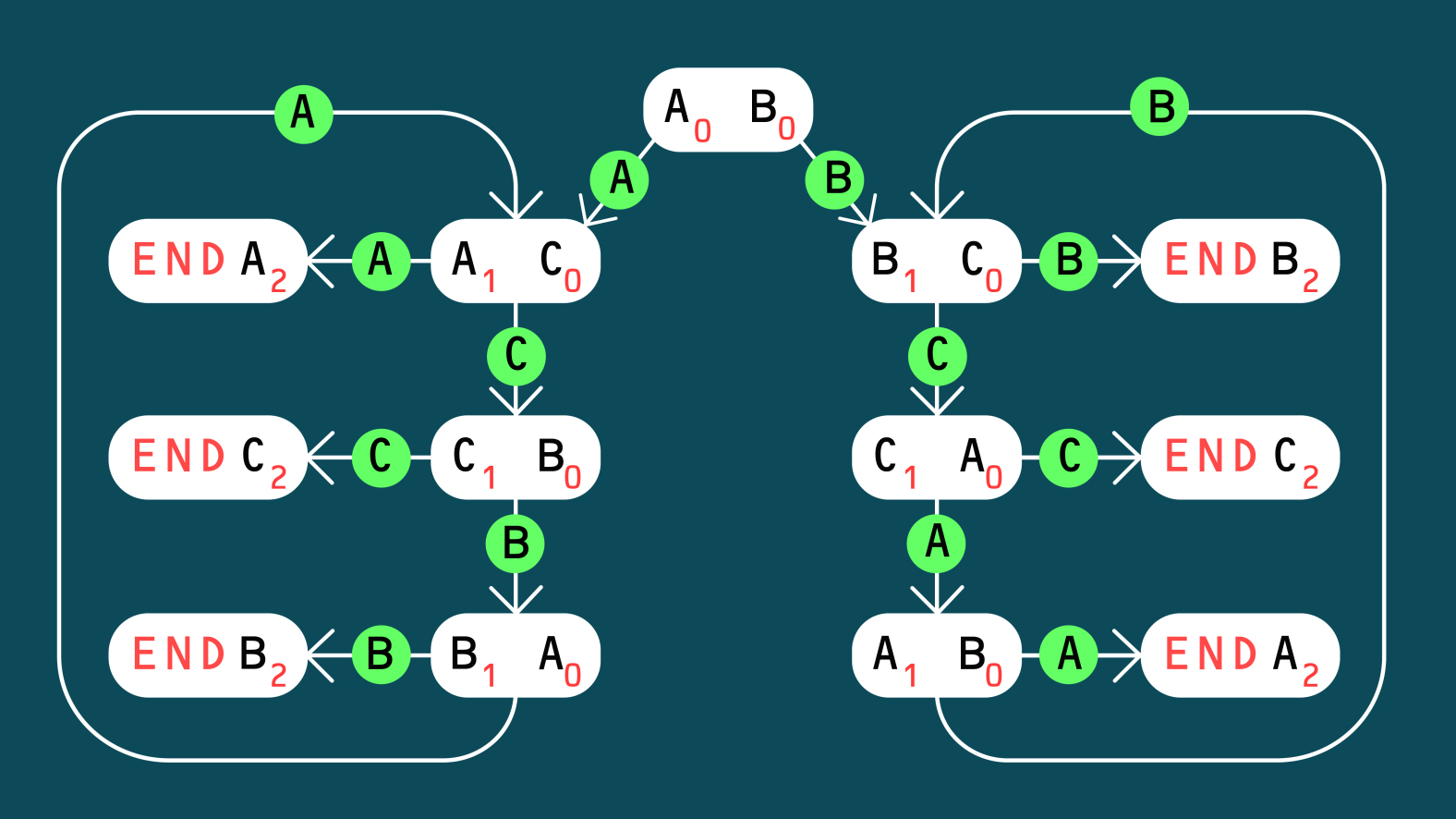
Exercise 3.62
A, B, and C are evenly matched tennis players. Initially, A and B play a set, and the winner then plays C. This continues, with the winner always playing the waiting player, until one of the players has won two sets in a row. That player is then declared the overall winner. Find the probability that A is the overall winner. Read More
Exercise 3.63
Suppose there are n types of coupons, and that the type of each new coupon obtained is independent of past selections and is equally likely to be any of the n types. Suppose one continues collecting until a complete set of at least one of each type is obtained.
- Find the probability that there is exactly one \(type-i\) coupon in the final collection. Hint: Condition on \(T\), the number of types that are collected before the first type i appears
- Find the expected number of types that appear exactly once in the final collection
Exercise 3.64
A and B roll a pair of dice in turn, with A rolling first. A’s objective is to obtain a sum of 6, and B’s is to obtain a sum of 7. The game ends when either player reaches his or her objective, and that player is declared the winner.
- Find the probability that A is the winner
- Find the expected number of rolls of the dice
- Find the variance of the number of rolls of the dice

Exercise 3.66
The opponents of soccer team A are of two types: either they are a class 1 or a class 2 team. The number of goals team A scores against a class-i opponent is a Poisson random variable with mean \(\lambda_{i}\), where \(\lambda_{1} = 2\), \(\lambda_{2} = 3\). This weekend the team has two games against teams they are not very familiar with. Assuming that the first team they play is a class 1 team with probability 0.6 and the second is, independently of the class of the first team, a class 1 team with probability 0.3, determine the following
- expected number of goals team A will score this weekend
- the probability that team A will score a total of five goals
Exercise 3.67
A coin having probability \(p\) of coming up heads is continually flipped. Let \(P_{j}(n)\) denote the probability that a run of \(j\) successive heads occurs within the first \(n\) flips.
- Argue that \(P_{j}(n) = P_{j}(n − 1) + P_{j} (1 − p)[1 − P_{j}(n − j − 1)]\)
- By conditioning on the first non-head to appear, derive another equation relating \(P_{j}(n)\) to the quantities \(P_{j}(n − k): k = 1, ..., j\)
Exercise 3.73
Suppose that we continually roll a die until the sum of all throws exceeds 100. What is the most likely value of this total when you stop? Read More

Exercise 3.74
There are five components. The components act independently, with component \(i\) working with probability \(p_{i}: i = 1, 2, 3, 4, 5\). These components form a system as shown in Figure below. The system is said to work if a signal originating at the left end of the diagram can reach the right end, where it can pass through a component only if that component is working. (For instance, if components 1 and 4 both work, then the system also works.) What is the probability that the system works? Read More
Exercise 3.90
The number of accidents in each period is a Poisson random variable with mean 5. With \(X_{n}, n \ge 1\), equal to the number of accidents in period \(n\), find \(E[N]\) when
- \(N = min(n: X_{n−2} = 2, X_{n−1} = 1, X_{n} = 0)\)
- \(N = min(n: X_{n−3} = 2, X_{n−2} = 1, X_{n−1} = 0, X_{n}= 2)\)
Exercise 3.91
Find the expected number of flips of a coin, which comes up heads with probability \(p\), that is necessary to obtain the pattern \(h, t, h, h, t, h, t, h\). Read more
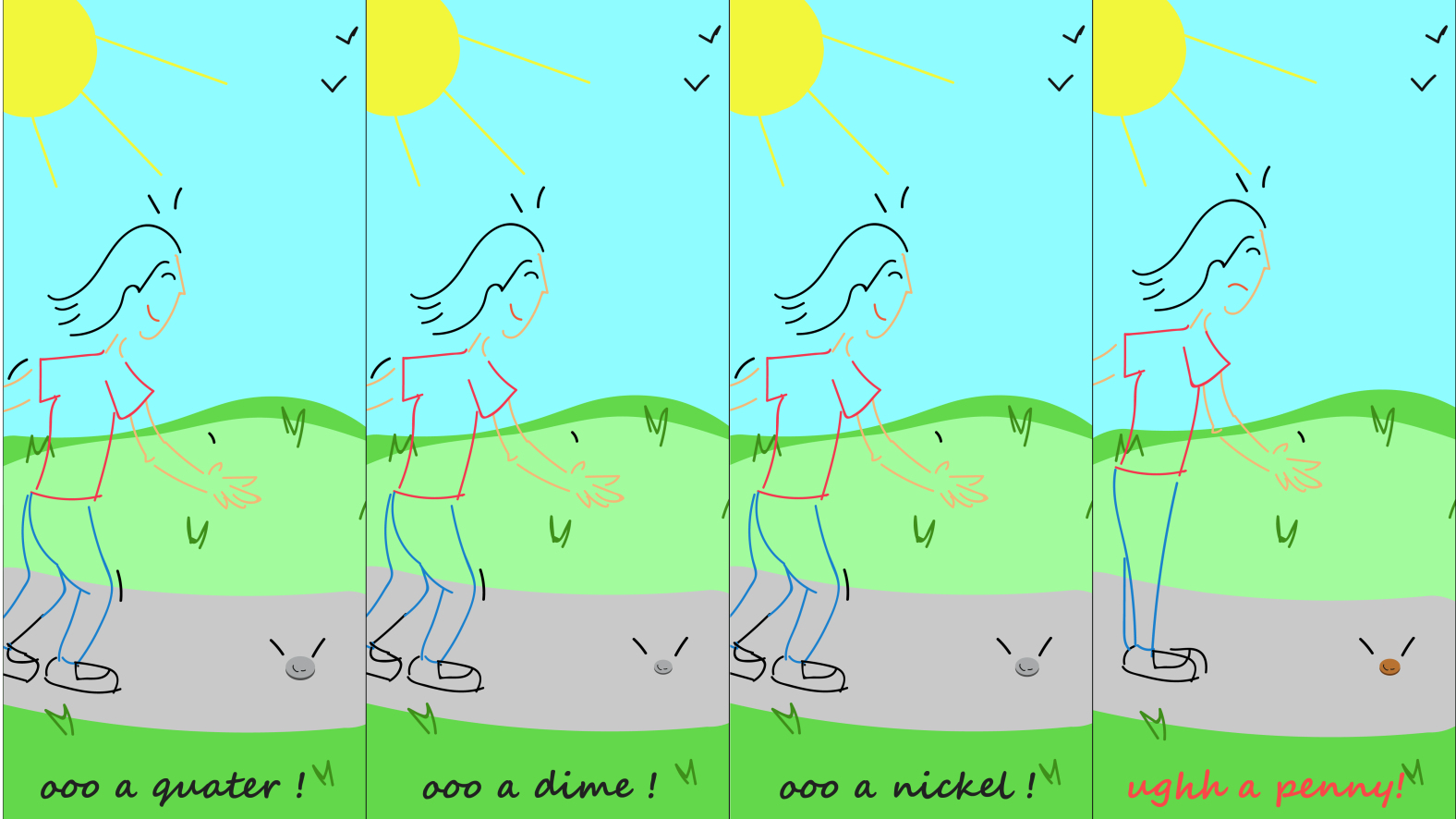
Exercise 3.92
The number of coins that Josh spots when walking to work is a Poisson random variable with mean 6. Each coin is equally likely to be a penny, a nickel, a dime, or a quarter. Josh ignores the pennies but picks up the other coins.
- Find the expected amount of money that Josh picks up on his way to work
- Find the variance of the amount of money that Josh picks up on his way to work
- Find the probability that Josh picks up exactly 25 cents on his way to work
Exercise 3.96
Consider a large population of families, and suppose that the number of children in the different families is independent Poisson random variables with mean \(\lambda\). Show that the number of siblings of a randomly chosen child is also Poisson distributed with mean \(\lambda\) Read More